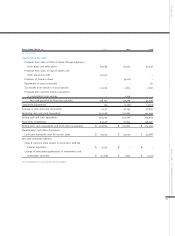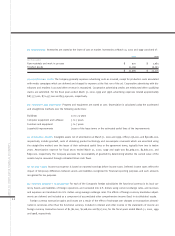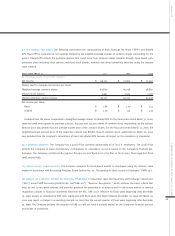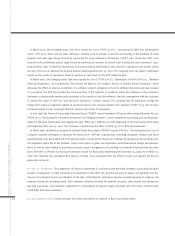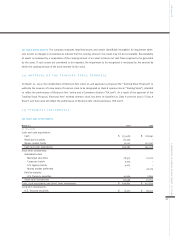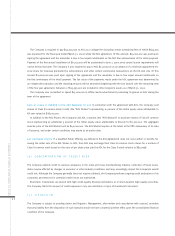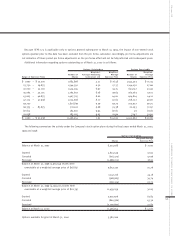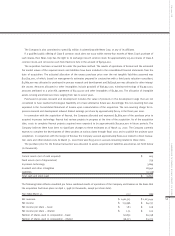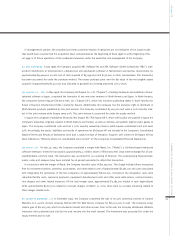Electronic Arts 2000 Annual Report Download - page 50
Download and view the complete annual report
Please find page 50 of the 2000 Electronic Arts annual report below. You can navigate through the pages in the report by either clicking on the pages listed below, or by using the keyword search tool below to find specific information within the annual report.
Long-term and short-term held-to-maturity investments include commercial notes with original maturities of five to eight years
secured by U.S. Treasury Notes which enable the Company to take advantage of certain tax incentives from its Puerto Rico
operation. These investments are treated as held-to-maturity for financial reporting purposes.
The fair value of held-to-maturity securities at March 31, 2000 was $18,162,000 which included gross unrealized losses of
$238,000. The fair value of held-to-maturity securities at March 31, 1999 was $24,353,000 which included gross unrealized
gains of $153,000.
(B) MARKETABLE SECURITIES Marketable securities are comprised of equity securities. The Company has accounted for
investments in equity securities as “available-for-sale” and has stated applicable investments at fair value, with net unrealized
appreciation reported as a separate component of accumulated other comprehensive income (loss) in stockholders’ equity.
Marketable securities had an aggregate cost of $15,000 and $585,000 at March 31, 2000 and 1999, respectively. At March 31,
2000, marketable securities included gross unrealized gains of $221,000. At March 31, 1999 marketable securities included
gross unrealized gains of $4,299,000.
For the fiscal years ended March 31, 2000 and 1999, the fair value of marketable securities sold was $8,604,000 and
$1,818,000, respectively. The gross realized gains from these sales totaled $7,528,000 and $1,454,000 for fiscal 2000 and 1999,
respectively. The gain on sale of investments is based on the specific identification method.
(C) FOREIGN CURRENCY FORWARD EXCHANGE CONTRACTS The Company utilizes foreign exchange contracts to hedge foreign
currency exposures of underlying assets and liabilities, primarily certain intercompany receivables that are denominated in for-
eign currencies, thereby limiting our risk. The Company does not use forward exchange contracts for speculative or trading
purposes. The Company’s accounting policies for these instruments are based on the Company’s designation of such instruments
as hedging transactions. The criteria the Company uses for designating an instrument as a hedge include the instrument’s
effectiveness in risk reduction and one-to-one matching of forward exchange contracts to underlying transactions. Gains and
losses on currency forward contracts that are designated and effective as hedges of firm commitments are deferred and recog-
nized in income in the same period that the underlying transactions are settled. Gains and losses on currency forward contracts
that are designated and effective as hedges of existing transactions are recognized in income in the same period as losses and
gains on the underlying transactions are recognized and generally offset. Gains and losses on any instruments not meeting the
above criteria would be recognized in income in the current period. The Company transacts business in various foreign curren-
cies. At March 31, 2000, the Company had foreign exchange contracts, all with maturities of less than nine months, to purchase
and sell approximately $242,143,000 in foreign currencies, primarily in British Pounds, Euro, Canadian Dollars, Japanese Yen
and other European currencies.
Fair value represents the difference in value of the contracts at the spot rate and the forward rate, plus the unamortized pre-
mium or discount. At March 31, 2000, fair value of these contracts is not significant. The counterparties to these contracts are
substantial and creditworthy multinational commercial banks. The risks of counterparty nonperformance associated with these
contracts are not considered to be material. Notwithstanding our efforts to manage foreign exchange risk, there can be no
assurances that our hedging activities will adequately protect us against the risks associated with foreign currency fluctuations.
NOTES TO CONSOLIDATED FINANCIAL STATEMENTS
48





